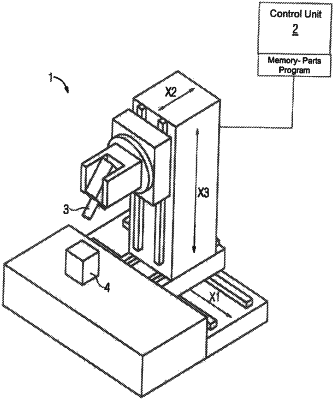| CPC G05B 19/416 (2013.01) [G05B 2219/43065 (2013.01); G05B 2219/43203 (2013.01)] | 12 Claims |

|
1. A method for operating of a machine tool having at least two axes, comprising:
predetermining a geometric description of a path and performing an advancing movement in accordance with the path by simultaneously moving at least sectionally a first axis and a second axis of the machine tool;
with a control unit of the machine tool
setting a first maximum value for a first kinematic parameter relating to the advancing movement along a section of the path dependent on the geometric description;
planning the advancing movement along the section with the control unit by taking into account the first maximum value;
activating the first axis and the second axis for executing the advancing movement in accordance with the planned movement along the section;
setting a second maximum value for a second kinematic parameter relating to the advancing movement along the section of the path dependent on the geometric description;
planning of the advancing movement along the section by taking account of the second maximum value;
determining a range of values for the first maximum value depending on a predetermined first kinematic limit value for the first axis;
determining a first range of values for the second maximum value depending on the first kinematic limit value for the first axis; and
for setting the first maximum value and the second maximum value, determining—dependent on the geometric description—a division parameter, which is used to uniquely define both the first maximum value and the second maximum value within the first range of values.
|